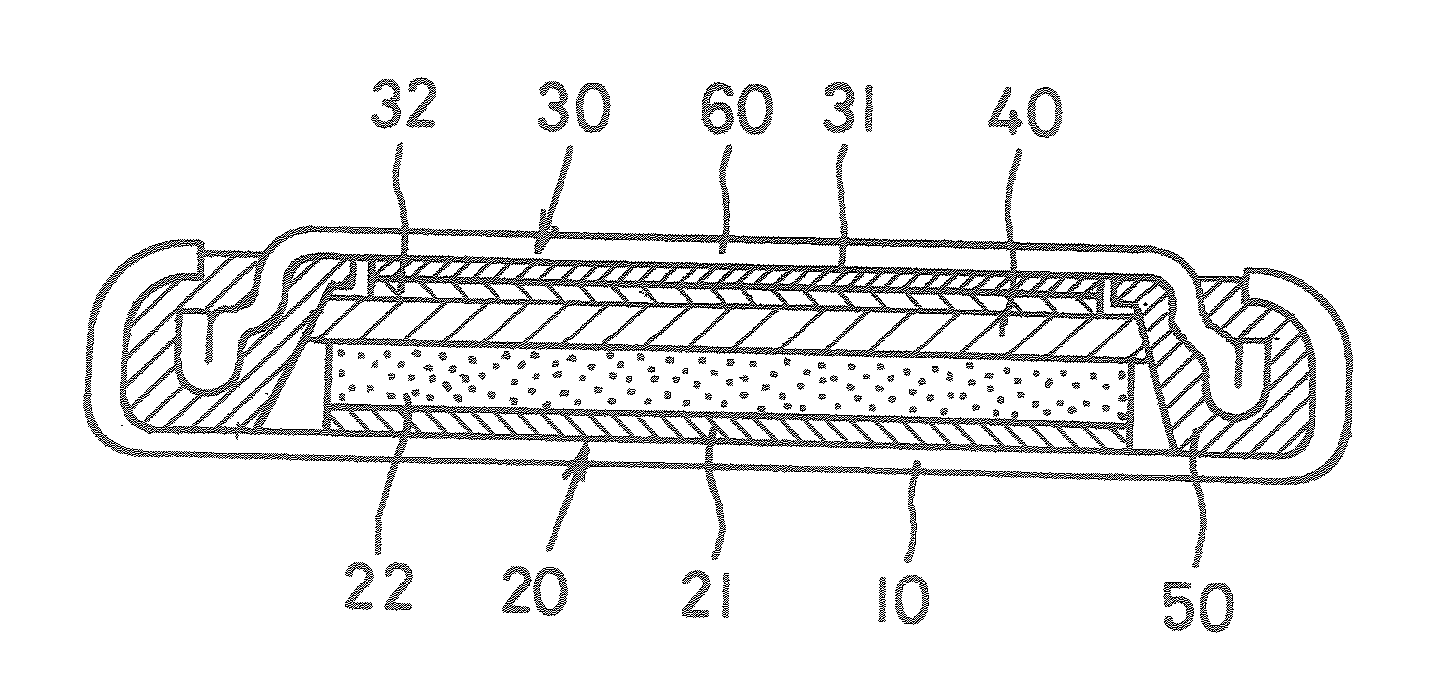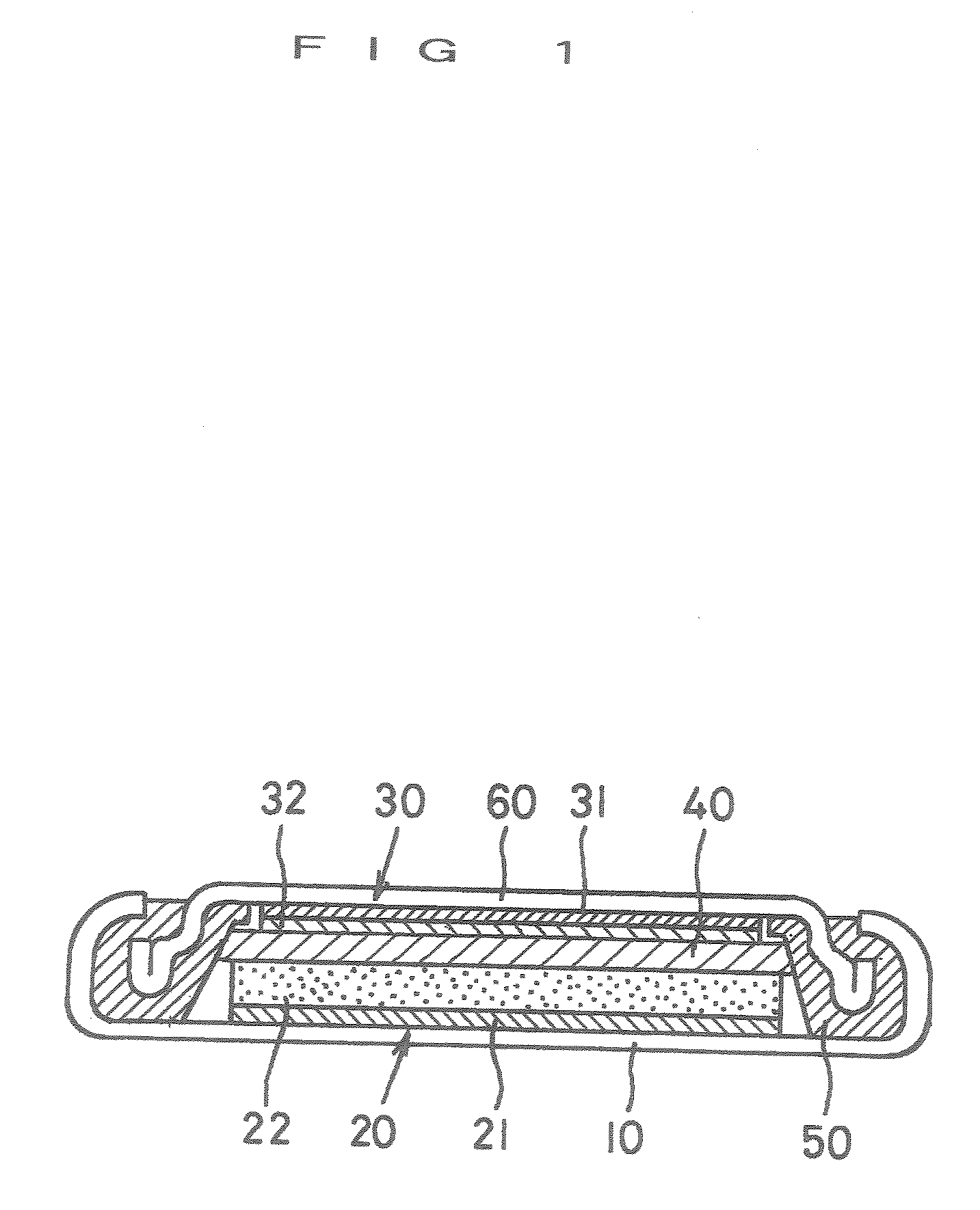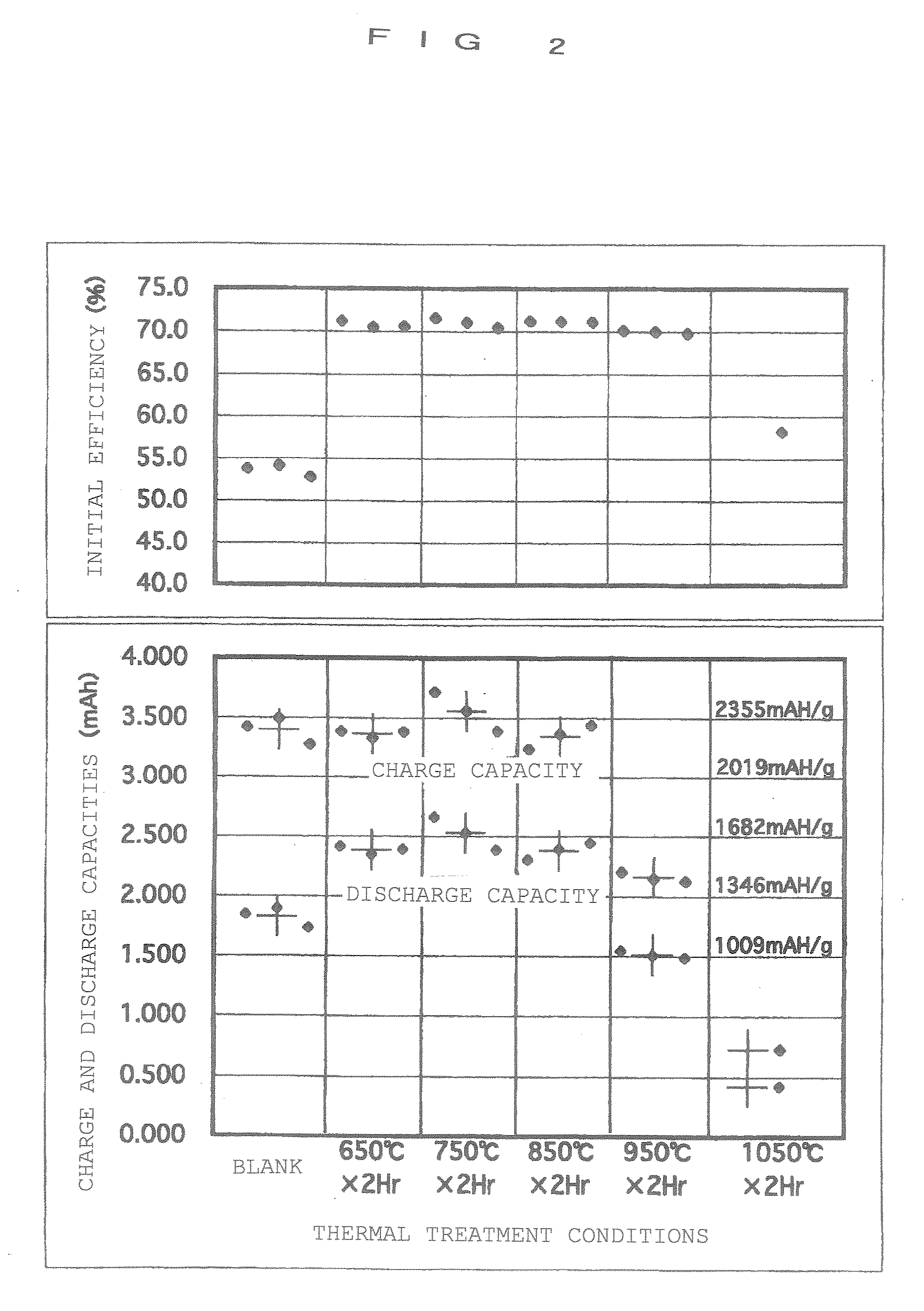Method For Producing Negative Electrode For Lithium Secondary Battery
a secondary battery and negative electrode technology, applied in the manufacturing process of electrodes, cell components, electrochemical generators, etc., can solve the problems of poor cycle characteristic, no advantageous effect, and low initial efficiency peculiar to the sio negative electrode, so as to improve the cycle characteristic, theoretical capacity of the thin film is large, and the cycle characteristic is improved
- Summary
- Abstract
- Description
- Claims
- Application Information
AI Technical Summary
Benefits of technology
Problems solved by technology
Method used
Image
Examples
examples
[0054] The following will describe results obtained by examining effects of the structure of the negative electrode in this lithium secondary battery and the production process thereof onto performances of the battery.
[0055] To produce the above-mentioned negative electrode, a rolled copper foil (thickness: 10 μm, and surface roughness: Rz−3 Pa (10−5 torr)]. The mole ratio of O to Si in the formed SiO thin film was 0.50. The film thickness in the specification is a value obtained by assuming that a film is formed on a flat face, and then making a calculation from the weight of the adhesion.
[0056] The thus-produced thin film type SiO negative electrode (1) was combined with a positive electrode, and the combination was sealed together with an electrolytic solution into a case to complete the above-mentioned lithium secondary battery (size diameter: 15 mm, and thickness: 3 mm). LiCoO2 fine powder was used for the positive electrode, and a nonaqueous electrolyte containing ethylene c...
PUM
| Property | Measurement | Unit |
|---|---|---|
| Temperature | aaaaa | aaaaa |
| Thickness | aaaaa | aaaaa |
| Thickness | aaaaa | aaaaa |
Abstract
Description
Claims
Application Information
 Login to View More
Login to View More - R&D
- Intellectual Property
- Life Sciences
- Materials
- Tech Scout
- Unparalleled Data Quality
- Higher Quality Content
- 60% Fewer Hallucinations
Browse by: Latest US Patents, China's latest patents, Technical Efficacy Thesaurus, Application Domain, Technology Topic, Popular Technical Reports.
© 2025 PatSnap. All rights reserved.Legal|Privacy policy|Modern Slavery Act Transparency Statement|Sitemap|About US| Contact US: help@patsnap.com



